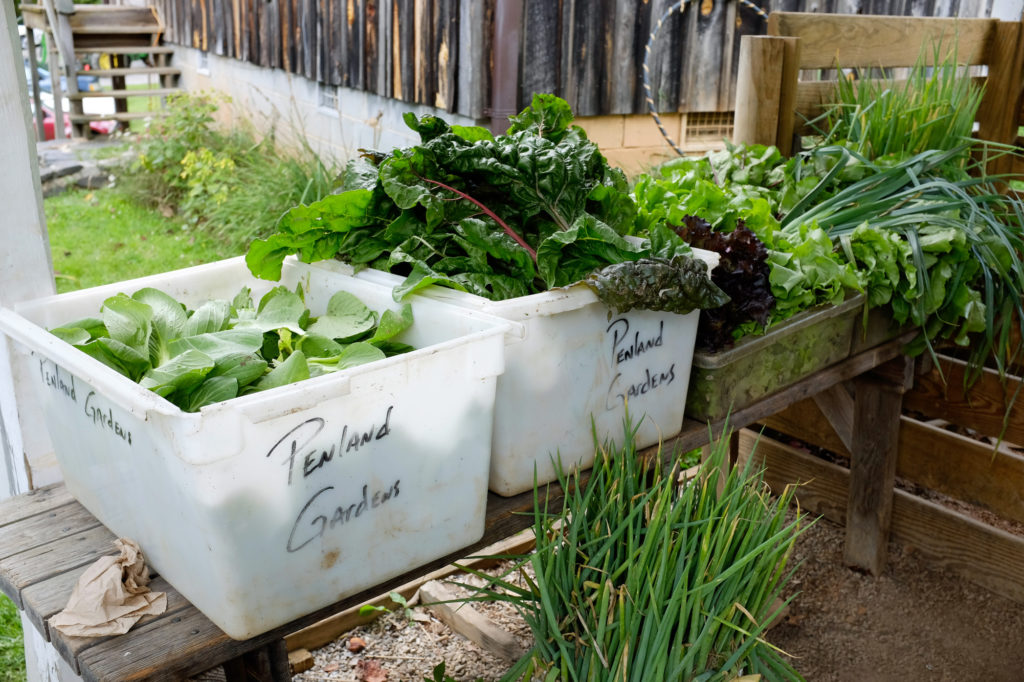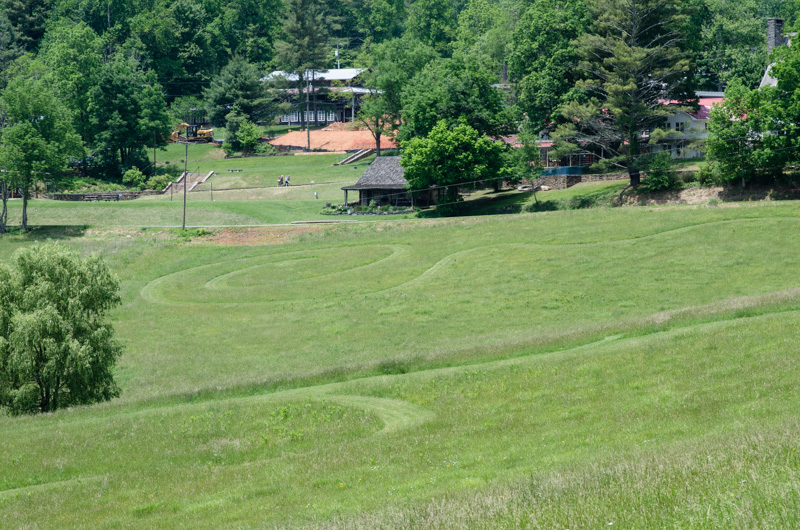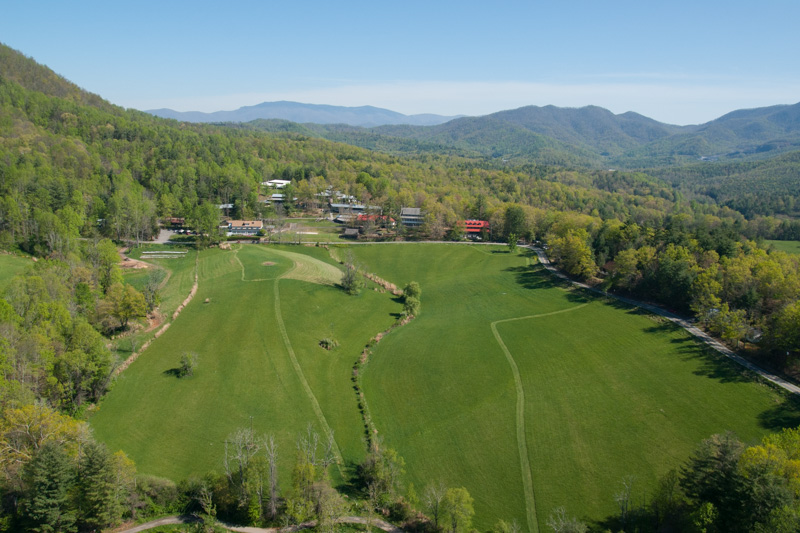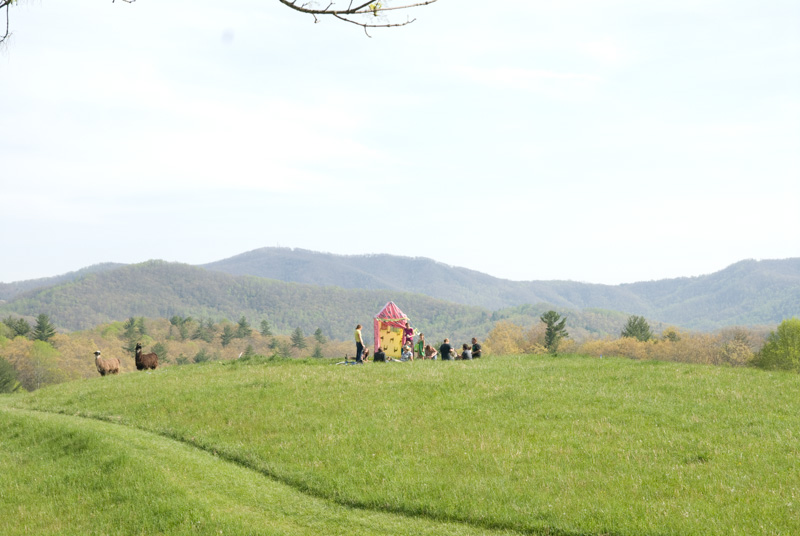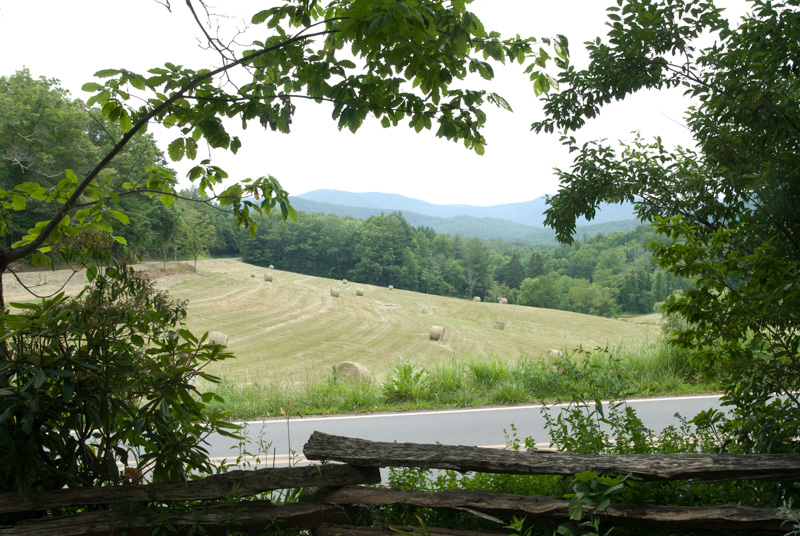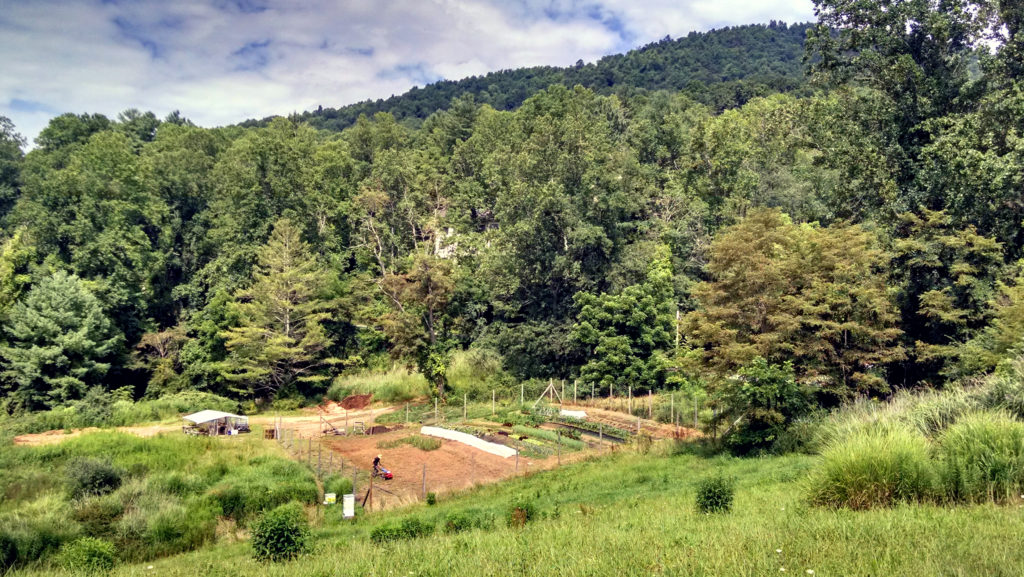
Yes, there’s snow in the forecast for tonight. But no, it’s not too early to start planting the Penland vegetable garden. In fact, thanks to a basement propagation room and the careful planning of Penland gardener Casara Logan, seedlings are already in the soil and sprouting!
Though the Penland garden often goes under the radar, it’s one aspect of our school that touches nearly everyone who sets foot on campus: Penland-grown vegetables go into hundreds of meals at The Pines spring through fall, herbs from the beds flavor drinks in the coffee shop, and the food scraps collected from everyone who dines here get composted and worked back into the rows to enrich the soil. This is no small thing: last year, nearly twenty tons of food waste were redirected into our steaming compost piles.
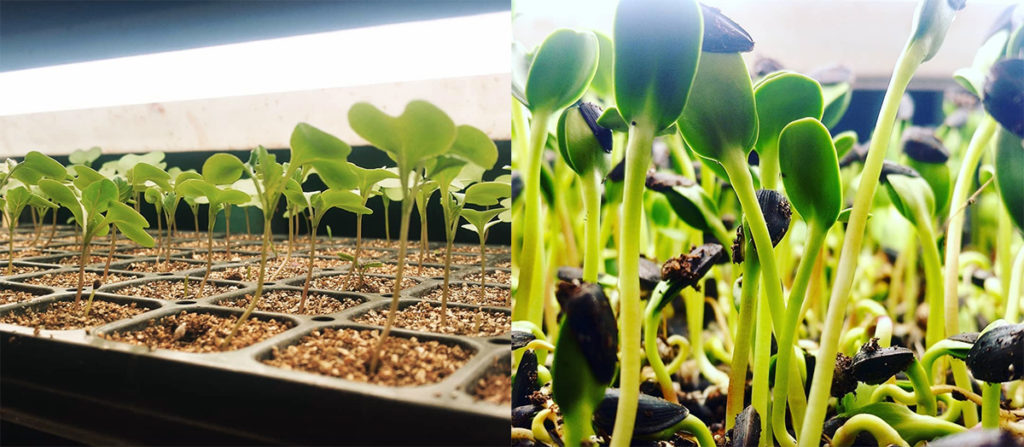
The Penland garden is a modest 100 ft x 100 ft of soil tucked into the curve of the road below The Pines. It is worked mostly by hand—or, more specifically, by the diligent hands of Casara, Penland WWOOFer Irvin Carsten, core fellow Luke Gnadinger, and a handful of work-study students. What can such a small team do in a small space? We’ll let the numbers speak for themselves: during the 2017 season, the garden produced over 25 varieties of vegetables and herbs, including 7 lbs of mint, 36.5 lbs of radishes, 96.25 lbs of arugula, 100 lbs of broccoli, 245 lbs of lettuce, 580 lbs of kale, and 765 lbs of chard, for a grand total of nearly 1.5 tons of produce!
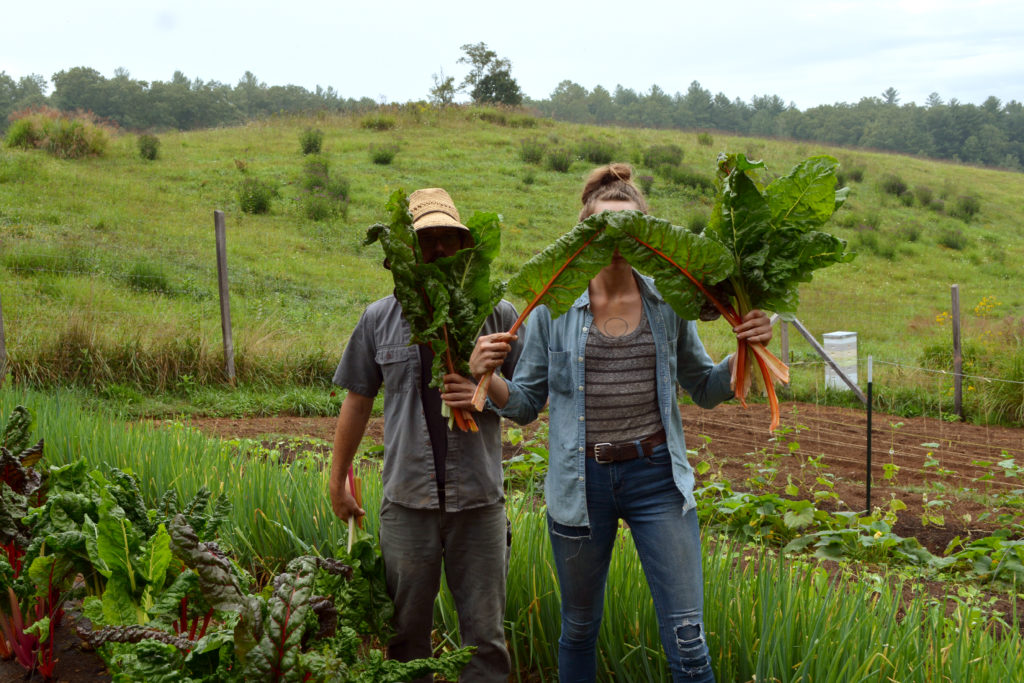
The vegetables are tasty, to be sure, but what’s the connection between cultivation and craft? A lot of it comes back to care, to love of process, and to appreciation for material. Like throwing a mug from a lump of clay, growing vegetables takes a commitment of time and attention. There are rows to turn, seedlings to water, weeds to pull, and pests to manage. Doing any of these steps well requires a real focus on the the task at hand and a sensitivity to the sun, the soil, and the rain. We can (and do) buy vegetables, but we believe that—as with a handmade mug—growing them ourselves provides real value to our gardeners, our students, our community, and this little piece of the Blue Ridge Mountains we love. It’s probably no coincidence that, before they were farmers, Casara and Irvin were both artists first.
